When to harvest garlic planted before winter?
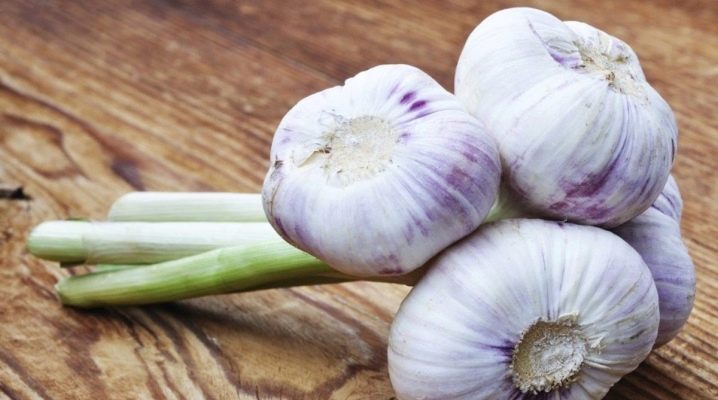
The final stage of growing any vegetable crop is harvesting. And in a situation with the cultivation of garlic, the answer to the question of when exactly according to the rules to harvest it, if it was planted before winter, is of particular importance? It is no secret that the quality and volume of the harvest directly depends on the timeliness of both planting and harvesting. This is also true for the shelf life of the popular vegetable. And in such a situation, it is important to correctly determine the most favorable days, taking into account a number of factors and indicators.
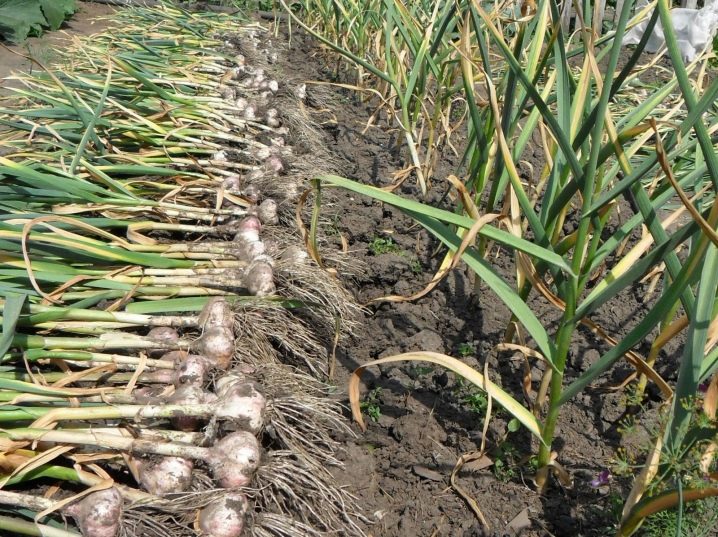
Signs of maturity of garlic
Garlic is a vegetable that enjoys record popularity and is indispensable on most tables. It is appreciated for its unique taste and bactericidal properties. But it is important to consider that it is not enough just to successfully grow the crop of this crop. Another key point is timely and correct cleaning... The shelf life of the garlic heads and their properties, including healing ones, will directly depend on this.
It is important to note that in the absence of significant adjustments introduced by weather conditions, the average duration of the growing season of the crop under consideration is from 3 to 4 months.
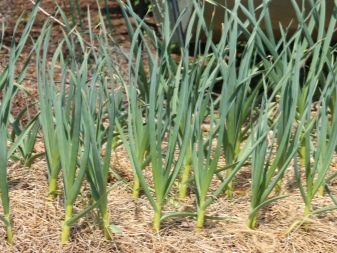

At the moment, farmers cultivate two types of garlic: winter and spring. In the first case, we will talk about the following important features:
- growing season from the appearance of the first shoots - from 80 to 100 days;
- shelf life - from 6 to 8 months;
- head - weight up to 50 g and consists of 4-6 teeth;
- a false stem is present in the center.
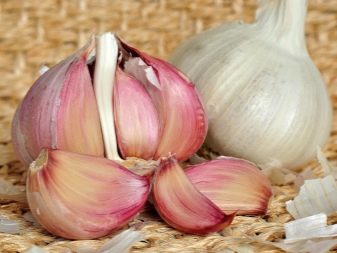
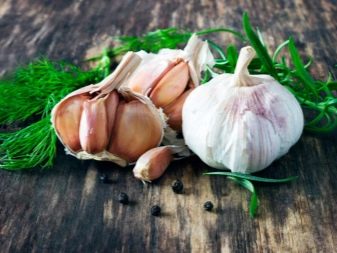
The right time for harvesting will be the key to preserving the harvest of garlic throughout the winter. If you dig up unripe heads or, conversely, overexpose them in the beds, then rotting or early drying out, respectively, is possible. When calculating the optimal time, it is recommended to take into account the following important points.
- Varietal features, the list of which also includes the duration of the ripening period.
- Summer weather features. In hot conditions, the plant matures faster, while prolonged rains slow down this process. It is important to note that in such cases, the dates are shifted by a maximum of 2 weeks.
- The location and configuration of the site and the beds themselves. This is, in particular, about shading, due to which the garlic is dug up later.
- Compliance with the rules of crop care. With timely and competent feeding, watering and other agrotechnical measures, the growing season becomes longer. Consequently, the timing of the harvest is shifted, and the heads grow larger.
- Variety... Growing his variety from year to year, the gardener already knows in advance when the time will come to harvest it. When purchasing a new one, it is important to know the ripening period of the vegetable.
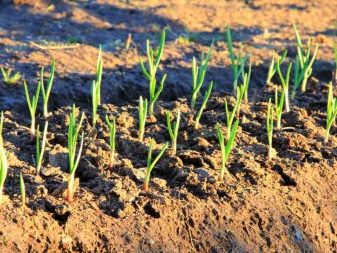

There are several main signs that it is time to dig or pluck out winter garlic.
- Yellowing, and sometimes complete drying of the lower leaf plates.
- Cracking of the seed box, which is located on the control arrow. By the way, experienced gardeners are advised to leave one such arrow on each garden bed during the growing process. As a result, it will serve as a kind of ripening indicator.
- The rhizomes of the heads look old when excavated.
- The "shirt" of the fruit acquires a purple or lilac color.
- The husks of the heads begin to crack.
To identify all of the listed signs, or, conversely, to make sure that they are absent, it will be enough to dig one control garlic in the garden.
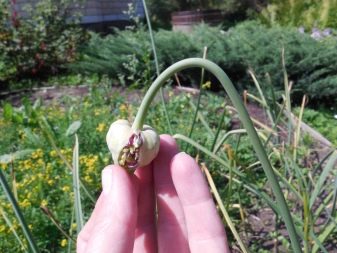
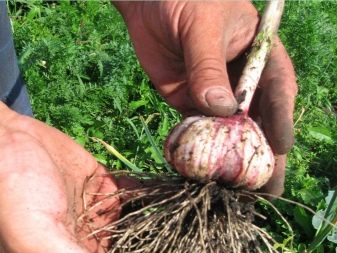
If it turns out to be ripe, then it remains only to choose the most favorable day for harvesting. It should be dry and sunny. It is allowed to dig up garlic in windy weather. It is best to harvest in the morning, and if precipitation fell on the eve of the selected date, then it is worth postponing the planned agrotechnical event.
It will not be superfluous to pay attention to folk signs associated with the harvesting of the described vegetable. In those days, when the calculations of the growing season were not carried out, it was according to them that the timing of the necessary work was determined. So, for example, today, many are trying to harvest on the site before July 12 (the feast of the apostles Peter and Paul). The belief looks quite logical, given that the middle of summer is the optimal time for harvesting winter crops.
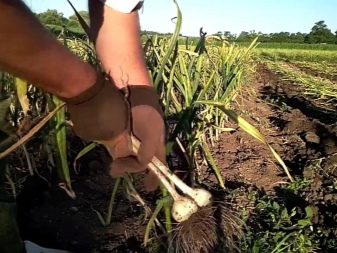
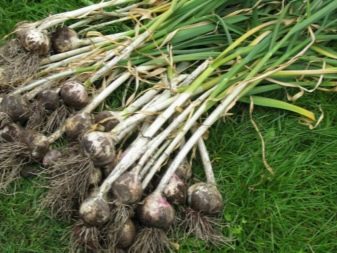
Timing for different regions
As already noted, the most favorable periods for harvesting the described vegetable directly depend on the climatic characteristics of a particular region. It is worth recalling that it takes more time for spring garlic to ripen, and it is dug out approximately two weeks after the winter one.
By the way, the so-called "rule of 100 days" is relevant for the latter among modern farmers. It is such a time period in the overwhelming majority of cases that the plant needs from the moment of emergence to full maturation.
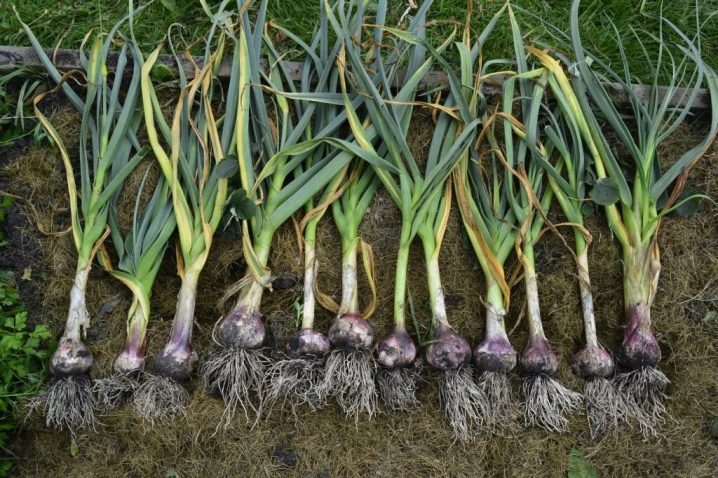
Analyzing the considered timing of agrotechnical measures, taking into account the climate and prevailing weather conditions, it is necessary to highlight the following important points for different regions of the country.
- In the south of Russia (Republic of Crimea, North Caucasus, Kuban) the season for summer residents and gardeners begins early. However, despite the warm climate, garlic varieties planted before winter ripen only by July 5 or later. At the same time, early spring plants, planted in open ground in the spring, yield a harvest already in the first ten days of August. The later variety is dug up, as a rule, 10 days later and even up to the beginning of the first month of autumn.
- For the regions of the Volga and Chernozem regions as is known, the temperate continental climate is characteristic. In this case, we are talking about cold winters and rather hot summers. The first harvest of the described vegetable, planted in winter, begins to be harvested here in the first ten days of July. By the way, the harvesting of spring garlic in such conditions falls on the period from August 20th to September 20th.
- Middle lane and Moscow region in terms of climate, they are very similar to the Volga and Chernozem regions. In these areas, winter harvesting begins on the 15th of the second summer month. After two weeks, the early varieties are harvested, and after another week, they begin to dig up the late species.
- Taking into account the peculiarities of the climate in St. Petersburg and the Leningrad region the most favorable terms for the implementation of the considered agrotechnical measures are the first 10 days of August. This is primarily due to the fact that these regions are characterized by rainy summers. By the way, if, according to forecasts, prolonged precipitation is expected, then it is highly undesirable to postpone the harvesting of garlic. It is important to remember that an excess of accumulated moisture negatively affects the keeping quality of garlic heads and predictably leads to their rather rapid decay.
- In the Far East, Urals and Siberia they start harvesting garlic not earlier than the end of July, but more often in early August. The key point here is that the northern regions are characterized by long winters. It is important for farmers to accurately record the time of sufficient heating of the soil and the appearance of the first shoots. It is from these dates that the time intervals are counted until the harvest.
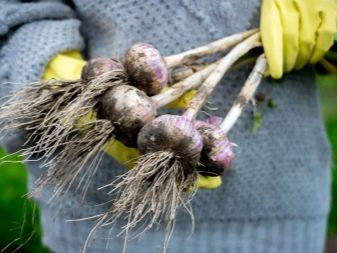

Why is untimely cleaning dangerous?
As practice proves, in a situation with the described vegetable, it is extremely undesirable to miss the exact time of harvesting.
It is important to remember that compliance with the terms provided for by the rules of agricultural technology directly determines the duration and results of storage of winter garlic.
It is worth evaluating the possible consequences in situations with both prematurely harvested and overexposed crops in the ground. It has been proven by many years of practice that ripe garlic heads that have been in the ground for too long become loose. The texture of these fruits will generally be soft. Often in such situations, the heads are divided into segments (cloves), and the garlic can give new shoots. However, this greatly increases the risk of negative effects of putrefactive bacteria, which, in turn, will shorten the shelf life of the vegetable.
It is equally important to avoid digging up winter garlic prematurely.... It will also adversely affect its condition and shelf life. The main problem is that with early harvesting, full-fledged scales do not have time to form on the heads and slices. This can cause garlic to deteriorate quite quickly, even under ideal storage conditions after harvest.

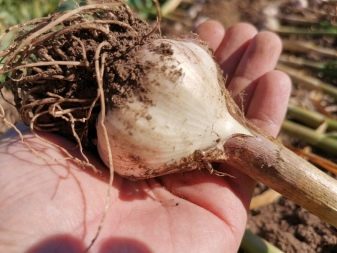
Harvesting Tips
Regardless of the region and all other factors that in one way or another affect the timing of harvesting garlic planted before winter, it is strongly recommended to follow certain rules when performing this agrotechnical measure. The most important in this case are the following points.
- One month before winter garlic ripens and you can already dig it, you need to stop watering. And this should be done regardless of when the plants were planted.
- Raking the soil is allowed two weeks before harvesting, which will speed up the final maturation of the cloves.
- It is required to dig out the garlic immediately, as soon as the signs of maturation of culture appeared. It is important to remember about the inadmissibility of delay, because otherwise the heads quickly divide into separate segments (lobules). As a result, the harvesting process itself is significantly complicated, as well as its presentation deteriorates, and the shelf life is reduced.
In addition to the timing, it is also important to comply with the cleaning technology.
- The considered agrotechnical operations are recommended to be carried out in the absence of precipitation. The best weather option is if there is no rain for at least a few days after digging the garlic. In this case, the heads can be dried well in the air, without moving them indoors. One of the mandatory elements of harvesting is sorting the fruits, which allows you to select damaged specimens that are unsuitable for storage.
- The most convenient and safest way to harvest crops with a pitchfork... Hand picking often causes the stems to break off, leaving the heads in the soil. If, nevertheless, a decision has been made to pull out the ripe garlic, then this must be done with the utmost care. Damaged heads and teeth should be eaten as soon as possible (before they start to deteriorate), since they will not be stored.
- If the weather permits, that is, it is sufficiently dry and warm, then immediately after digging (pulling out) the crop can be left directly on the beds for drying. But it is worth considering that prolonged exposure to direct sunlight is highly undesirable.
- Removal of stems and rhizomes from the heads is carried out only after they have dried... In this case, you should leave small (up to 2 cm) parts of the roots and about 5-10 cm of the stem.
- When harvesting, it is worth considering the way the garlic will be stored in the future. If we are talking about the so-called braids, then only the roots are cut.
In the process of digging, it will be useful to immediately sort the grown crop. And here, the key criteria for selection and rejection will be the size of the heads and their integrity.In parallel, at this stage, seed is selected for planting next year.

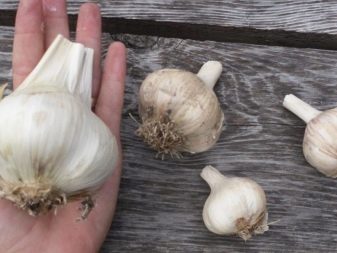
Compliance with the listed simple rules for collecting ripe garlic will guarantee the longest possible storage of this popular vegetable. At the same time, the heads retain all their varietal qualities throughout the year, which makes it possible to use them, including for planting in the next season. Unfortunately, quite often, having grown a rich and high-quality crop, gardeners, due to certain circumstances, incorrectly (untimely) collect it or prepare it for storage.
The consequences of such actions will be extremely negative. It is worth highlighting the following most common mistakes.
- Watering garlic beds on the eve of harvest. It is strongly recommended to exclude irrigation and fertilization from the list of activities at least two weeks before the described procedure. Under such conditions, the plant manages to form a full-fledged protective layer (scales), which in itself greatly facilitates digging out ripe fruits.
- Attempts to pull (pull sharply and with excessive force) the garlic from the ground... It is much better to dig up the matured heads, as otherwise it will be difficult to avoid damaging them.
- Removing the leaves immediately after removing the garlic from the soil... The fact is that the leaf plates are still alive at the time of digging, and therefore they will be able to feed the heads for several days, which, in turn, contributes to the final formation of the denticles.
- Insufficient drying of heads... Long-term practice proves that when harvesting and preparing garlic for further storage, it is better to dry the heads.
- Harvesting in wet weather... And also do not perform such actions in the evening.
Naturally, do not forget about the timeliness of cleaning, since it is the failure to meet the deadlines that is one of the most serious mistakes. By following the key agronomic rules and avoiding major miscalculations, you can dig up in time and preserve a good harvest of winter garlic for a long time.
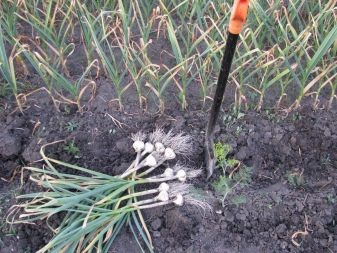
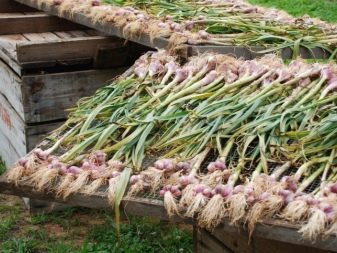













The comment was sent successfully.